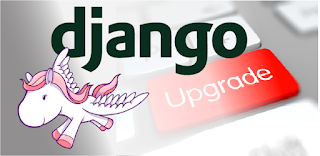Currently Django already in version 1.9 the latest. And my Django app developed on Django version 1.6 since my last update. As the support and update will not delivered to version 1.6, better to upgrade it to the next version, which is 1.7 .
In upgrading a Python web framework like Django, the path not easy especially if you already build and using many library. Some will support the new version, some just not available for the new version of Django. As 1.7 is long enough, i will try my upgrade with virtualenv just like my previous upgrade from 1.5 to 1.6 in here.
So why need to upgrade. Actually, the why is have different answers on each case. For me, i want to have the update and feature Django new version offers, but provide stable framework for my development and app. Because so many component already in use and to make sure the app not break is the first priority. Some library i use were django-compressor, django-debug-toolbar, pytest for testing, south for database migration.
Some of the library like south migration, in django-1.7 already have the migration in core, so will need to remove south and use default migration shipped with django.
I will make this blog as an upgrade process log which i run step by step. Some notes are currently i am upgrading from Django-1.6.5 . If you still running Django-1.5.x you need upgrade it to django-1.6.x first.
As what best practice to do on every upgrade, one should read about the change logs in the new version. The new change in django-1.7 was :
1. Migration in core , which can replace south-migration lib if you use it.
2. Some deprecated lib like django.utils.simplejson. You can use json in new django-1.7
3. Test runner setup that changes
4. Support Python > 1.7
For details release notes can go to Django-1.7 Release notes
Let's start the migration path on new Django-1.7.11 from Django-1.6. First of all, we will using virtualenv in python for the upgrade. First we have the running old django in virtualenv, we need create new virtualenv and install the new Django-1.7.11
# cd /home/masterman/
# makevirtualenv dj-1.7.11
# workon dj-1.7.11
Then we can now install all the package we need for the webapp. I assume you will have requirements files to be feed to pip for installation. If you have the django requirement, change the version of django to Django==1.7.11
Then run the installation using pip :
# pip install -r requirements.txt
It will install all the requirement lib of the project you have, including django-1.7.11
I assume you project still intact, and in my case is /home/masterman/super-ecommerce/
Because i have test build in my app, and no changes, i can test it using django-1.7.11.
#py.test
This will test all my test file and give error if encountered. Thats why we need a test in every application we build so this things help us in migration or updates. Test is worth the effort.
And then voila, if there is errors you will spot where the errors are. And for me, i found some errors regarding the application library i use.
Continue on next part >>>







0 comments:
Post a Comment